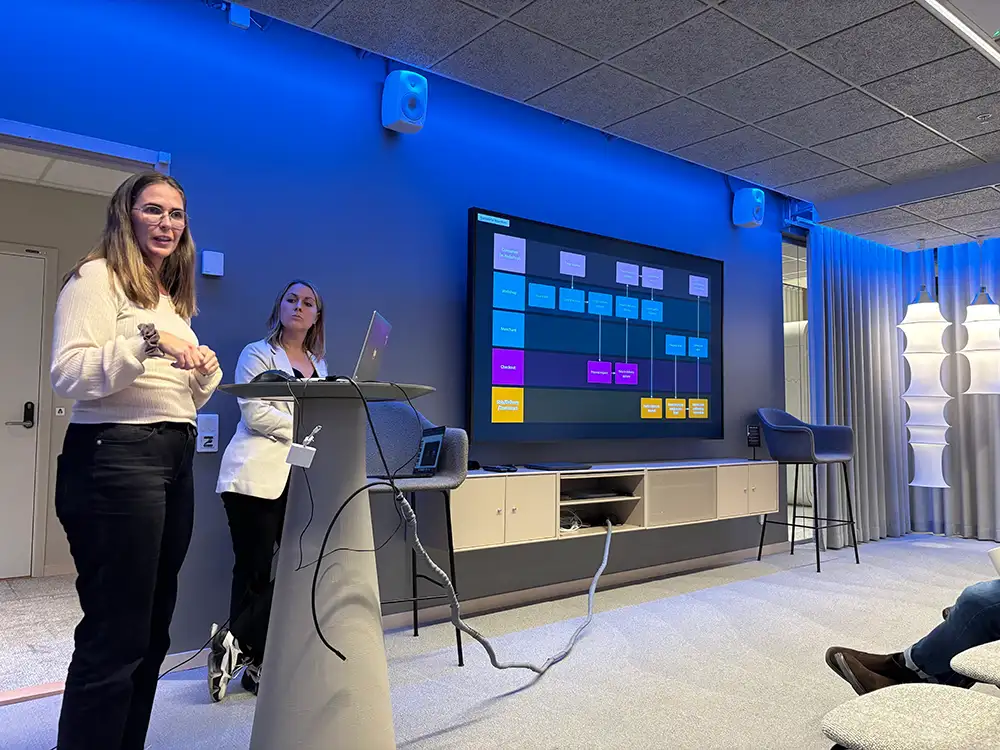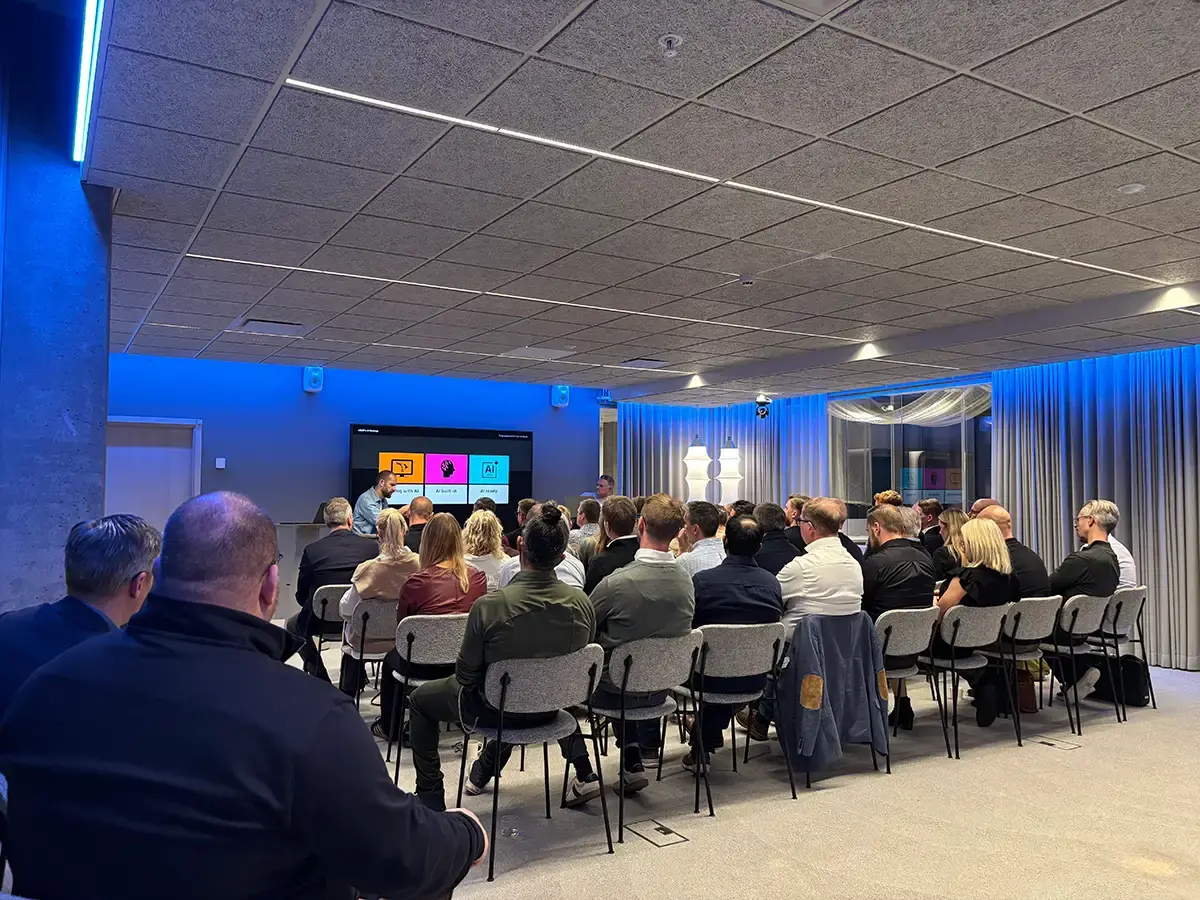
Last update: 07.07.2025
This blog post is part of a wider series. If you haven't already, check out the first installment here: What if your checkout was quietly costing you 30% of sales?
In this blog:
- Intro
- Where friction starts
- A new type of leverage
- The strategic impact
- The psychology behind it
- The modern takeaway
- What comes next
- Further reading: Checkout conversion FAQs
Intro
In the logistics world, it’s rarely the flashy innovations that unlock the most value.
More often, it’s the quiet systems in the background, unseen by the customer, that make or break the experience. These systems only get noticed when friction appears, until collaborative teams recognize the pain, see the opportunity, and take the next step to find a solution. In e-commerce, one of those systems is your delivery logic.
Few areas offer as much hidden leverage as delivery logic. What follows is a realistic scenario based on patterns we've seen across fast-scaling retailers: high growth, rising complexity, and the need to adapt without friction. One that might sound familiar if you’re in the business of scale, complexity, and customer promises.
Where friction starts
Picture a fast-scaling Nordic retailer. New SKUs, new markets, new complexity. The Head of eCommerce is juggling performance marketing, peak season logistics, and margin pressure.
But the real bottleneck? Surprisingly, it’s not the supply chain. It’s the checkout — an area where cross-functional teams are starting to collaborate more closely to implement smarter, faster solutions.
Customers see too many irrelevant delivery options. Promos go live, but shipping logic doesn’t follow. The brand offers store pickup, but it only shows up sometimes.
And every time they want to change the logic, add a carrier option, adjust a minimum threshold, or highlight a sustainable option, it’s another ticket to a developer. Another two-week wait…
A new type of leverage
That’s where the Rules Engine enters, not as a UI enhancement, but as an operational strategy layer.
What it enables is profound:
- Delivery options tailored dynamically based on real-time cart data such as customer location, cart value, time of day, and product type
- Rules configured and deployed without a single line of code
- Carrier choices activated or suggested automatically
- Pickup options tied to live store data
What used to require a product roadmap and a dev sprint, now happens in minutes, from a central interface. Without code. Without delay.
"In logistics, the cost of delay isn’t just operational. It’s psychological. Customers don’t wait for fixes. They just bounce."
The strategic impact
In this scenario, the retailer sets three simple rules:
- Hide express shipping in rural areas during peak
- Offer green delivery choices
- Trigger free shipping only for low-weight orders above €75
The results, based on market benchmarks:
- Drop in cart abandonment
- Fewer delivery-related support tickets
- Higher uptake of sustainable options
This is where logistics stops being back-end. It becomes a conversion engine.
The psychology behind it
Why does this work? Because it’s not just about systems. It’s about how people make decisions and the invisible forces that guide them.
When customers are presented with too many options, they don’t feel empowered. They feel overwhelmed. Cognitive Load Theory tells us that reducing unnecessary complexity frees up mental capacity, which in turn leads to faster, more confident decisions.
Similarly, Hick’s Law shows that decision time increases with the number of choices. By using delivery rules to filter options down to just the most relevant ones, we remove hesitation and reduce the chance of cart abandonment.
Then there’s Nudge Theory: by placing the most sensible delivery choice first (like a green option in urban areas), we subtly guide customers to make decisions that are better for them, and for the business.
But this isn’t just about customers. Internally, Control Theory explains why giving teams the ability to manage delivery logic directly, without relying on devs, makes organizations faster and more adaptive. People move quicker when they feel agency.
And finally, the IKEA Effect: when teams craft the logic themselves, even without code, they’re more invested in the outcome. They trust it. They defend it. They optimize it.
This isn’t UX fluff. It’s behavioral infrastructure, and it turns delivery logic into a strategic asset.
The modern takeaway
If you’re scaling across Europe, managing complexity, or tired of waiting for dev cycles to fix delivery logic, the Rules Engine offers one thing above all: operational freedom.
- Change conditions without code
- Adapt logic per market
- Highlight strategic delivery types
- Scale without chaos
No smoke. No dashboards for the sake of dashboards. Just rules, running live.
Because in e-commerce, the smallest hinge, the right rule, can swing the biggest door.
What comes next
In our next blog post, we’ll move from logic to proof: how to run A/B tests inside Checkout to validate what works and what doesn’t.
Because rules are powerful. But tested rules? Those drive repeatable results.
Stay tuned.
Turn delivery choice into a conversion driver
The new nShift Checkout integrates flexible delivery into your ecommerce experience to lift conversion, reduce friction, and streamline fulfillment.
Learn moreFurther reading: Checkout conversion FAQs
How to improve checkout experience?
Simplify the checkout process by reducing unnecessary steps and prioritizing ease of use, particularly for mobile users. Provide accurate delivery options with estimated arrival dates and clear shipping costs upfront to increase transparency. Incorporate features such as auto-filled forms, guest checkout, and multiple payment methods to cater to diverse customer preferences. Include real-time tracking integration as part of the checkout, offering seamless communication about order progress post-purchase.
How to increase checkout conversion?
Clearly display delivery options and costs early in the process to remove uncertainty and build trust with shoppers. Optimize the page speed and design for enhanced usability, ensuring a fast and intuitive experience. Enable secure payments and trust signals, such as certifications and policies, to reinforce credibility. Offering promotions like free shipping or discounts for specific delivery choices can motivate customers to finalize purchases.
How to reduce cart abandonment?
Address common issues like hidden charges or unclear delivery details by being upfront about pricing and timelines. Implement reminder notifications via email or SMS, including abandoned cart recovery messages with personalized delivery options. Optimize the checkout layout to minimize distractions and barriers, ensuring that customers can complete their purchases quickly. Providing flexible delivery and payment solutions tailored to the customer’s convenience encourages them to commit to their orders.

About the author
Thomas Bailey
Thomas plays a key role in shaping how new features and platform improvements deliver real value to customers. With a background spanning product, tech, and go-to-market strategy, he brings a pragmatic view of what innovation looks like in practice and how to make delivery experiences work harder for your business.






